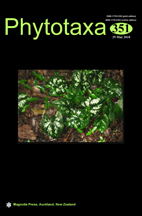Abstract
During a survey of Mucorales in fragments of an Atlantic Upland Forest inserted in the semiarid region of Pernambuco, Brazil, a specimen of Mucor was isolated from soil samples. The specimen was characterized based on morphological, physiological and molecular data (ITS and LSU rDNA regions). The isolate produces intensely branched sporangiophores commonly with between one and several septa with mostly applanate columellae. The sporangiophores were smooth-walled and varied in shape and size, while some were subglobose. The best growth was at 25°C but there was also good growth at 30°C. Based on the evidence of the analyzed datasets a new species of Mucor is proposed. A detailed description of the new specimen of Mucor from the Brazilian semi-arid region are provided.

